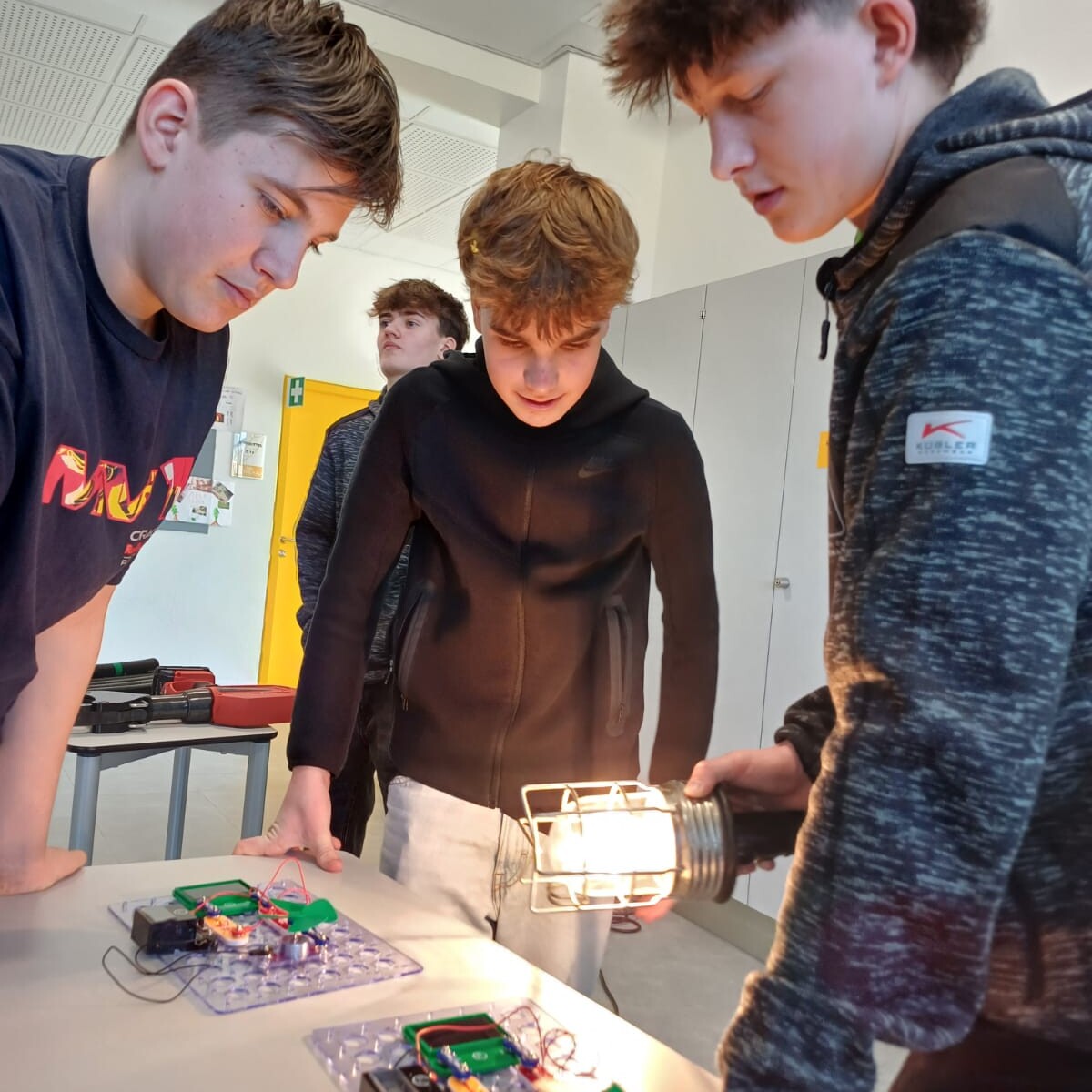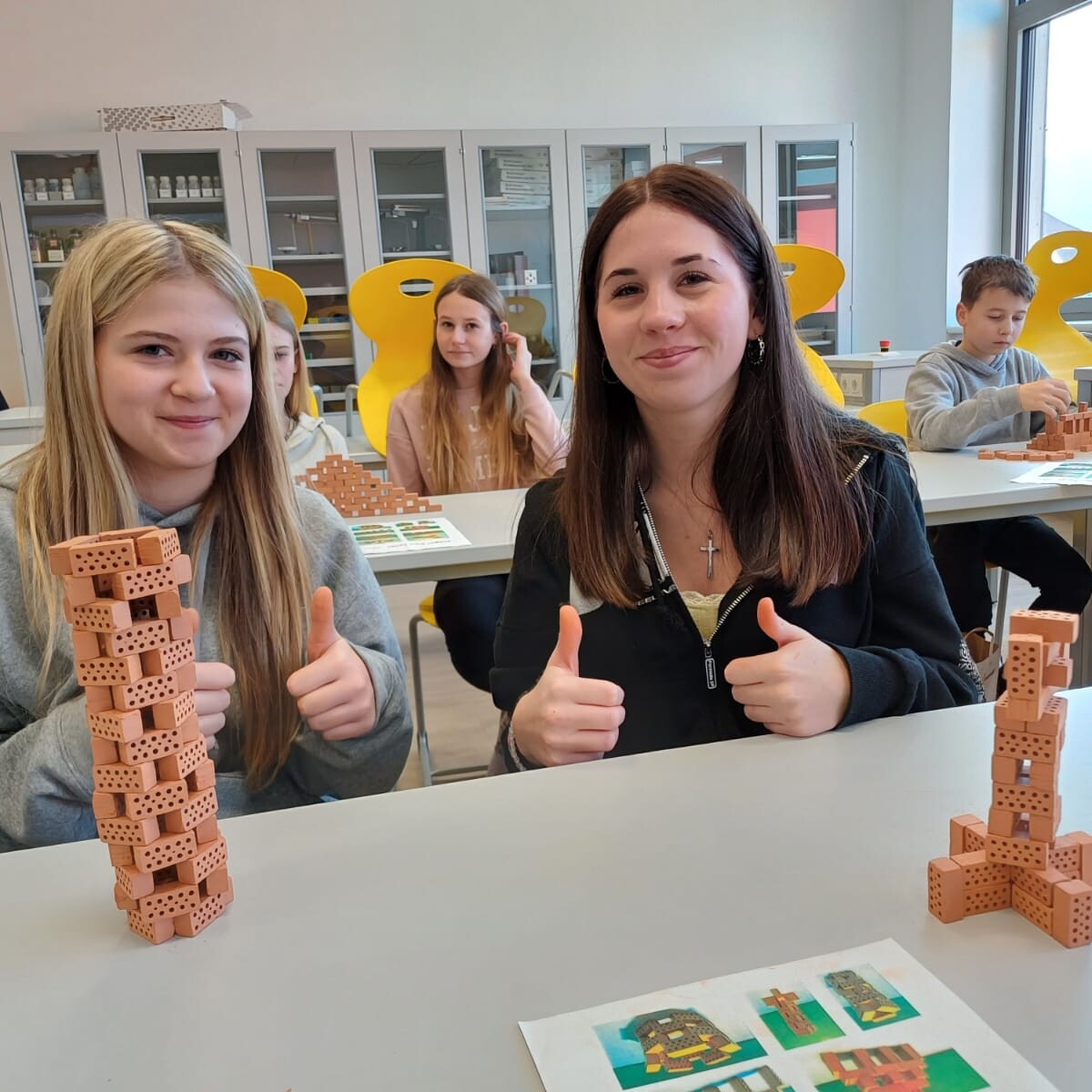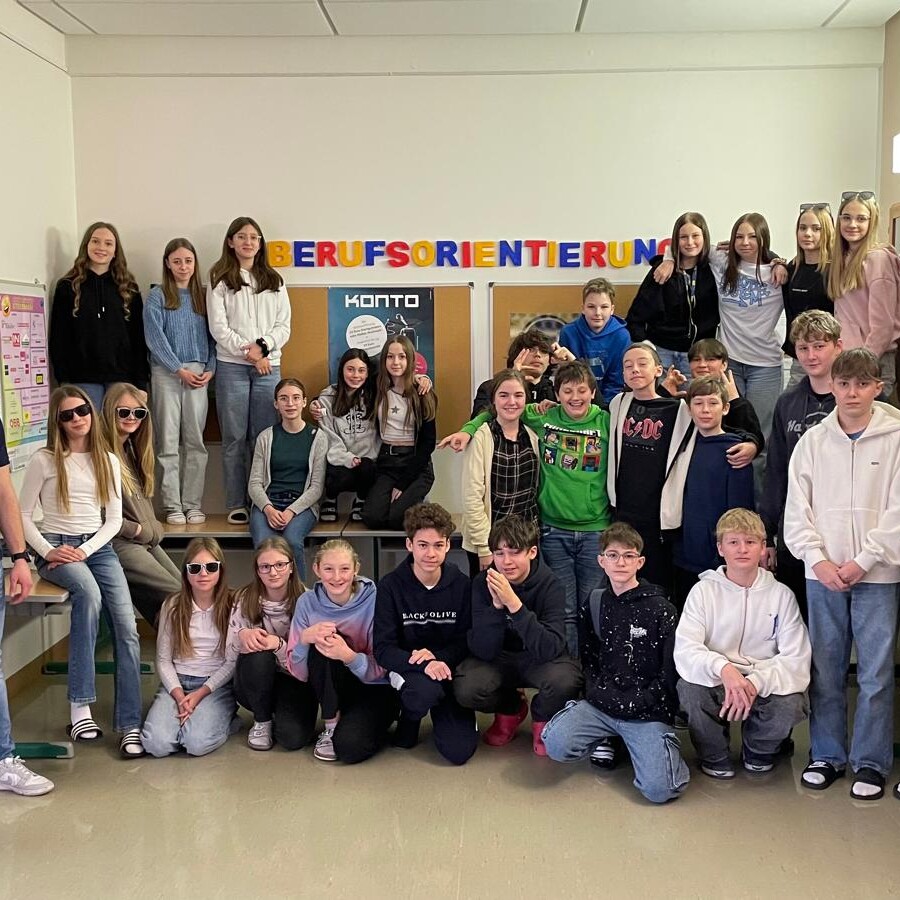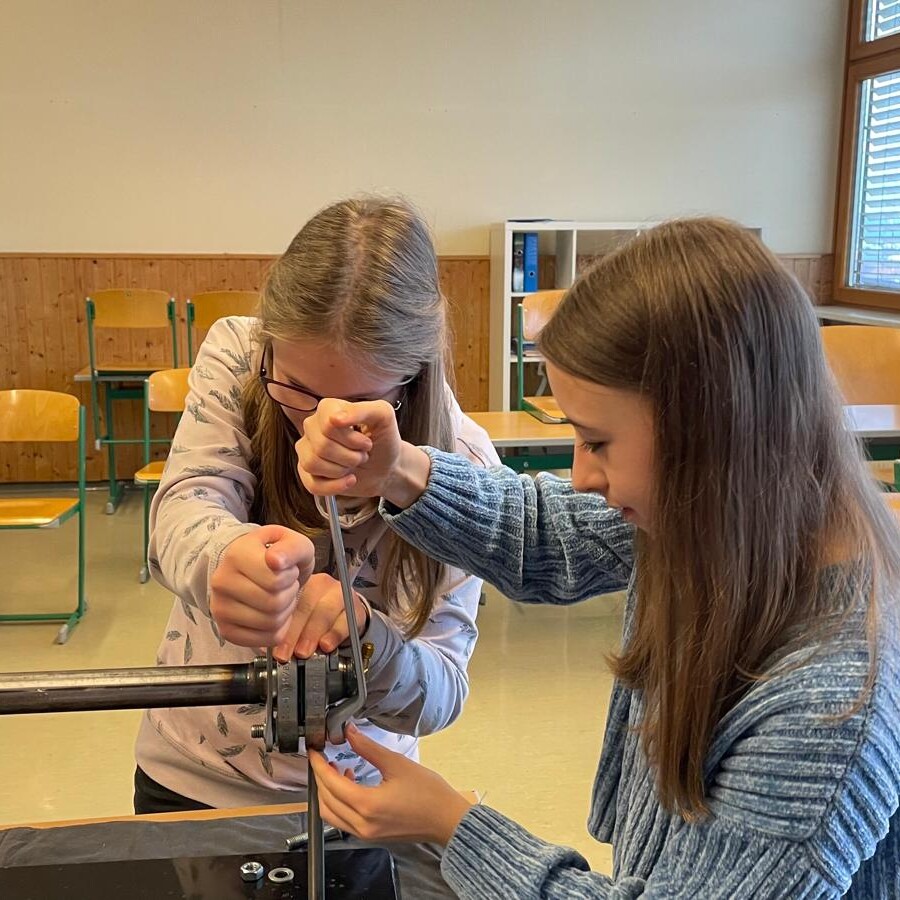Jobs aus der Box - MINT Boxen
The “Jobs out of the Box – MINT Boxes” RealityCheck offers upper secondary students (15–19 years) the opportunity to experience typical professional activities from the fields of mathematics, informatics, natural sciences, and technology in a hands-on way. Companies provide authentic tasks from their daily work, which students solve in groups at classroom stations. The method follows the sequence practice – reflection – career orientation: after completing practical assignments, entrepreneurial personalities from the region share their professional experiences, enabling discussion and reflection. In line with the STEM strategy of Upper Styria East, the format creates a strong link between school-based learning, regional companies, and future career pathways, making labour market opportunities tangible.
The “Jobs out of the Box – MINT Boxes” RealityCheck combines practical, hands-on tasks from mathematics, informatics, natural sciences, and technology with direct insights from companies. Students work in groups on authentic assignments developed by regional companies, such as measuring, designing, testing, or programming. These activities are implemented as classroom stations and supported by teachers, company representatives, and NGO staff. The pedagogical method follows the sequence practice – reflection – career orientation: students first explore concrete problems, then receive input from professionals, and finally reflect together on the relevance for their own skills and possible future career paths. By linking school learning with real professional requirements, the format provides orientation for internships, apprenticeships, and higher education. It strengthens problem-solving, teamwork, and motivation, while making the diversity of STEM careers visible and tangible.
Lernergebnisse
Zusätzliche Lernergebnisse
Encourage students to recognise and develop their own STEM competences, test themselves in realistic problem situations, reflect on strengths and interests, and connect school knowledge with concrete regional career options in study, training or employment.
Dauer
Altersgruppe
Art der Tätigkeit
Kontakt
Land: Österreich
Kontaktperson: Dr.in Michaela Marterer
E-Mail: mm@stvg.com
Umsetzung
Schritt für Schritt
- Step 1: Coordination between school, NGO (BFB), and companies – agreement on goals, timeframe, safety and roles.
- Step 2: Companies design authentic STEM tasks, provide materials and appoint staff or apprentices.
- Step 3: Teachers prepare students, explain objectives, divide groups, and ensure curriculum link.
- Step 4: NGO and companies set up stations, check logistics, safety, and technical details.
- Step 5: Implementation in rotation: groups of 5–8 students solve tasks at 3–4 stations, accompanied by company representatives, while teachers moderate.
- Step 6: Reflection: plenary discussion in class about skills, tasks, and related professions; linking experiences to further career options.
- Step 7: Follow-up: evaluation of results, feedback from all actors, and planning of potential continuation (e.g. internships, visits).
Beteiligte Berufe
The MINT Boxes bring typical professional activities from the fields of mathematics, informatics, natural sciences, and technology into the classroom. Involved professions include engineers, CAD/CAM specialists, laboratory technicians, production workers, IT experts, and apprentices from technical companies. They present authentic tasks such as measuring, calculating, designing, testing, or programming, which reflect real workplace processes.
The focus is not on single job titles but on cross-cutting STEM competences that are relevant in many careers. By working on practical assignments, students experience the application of problem-solving, logical thinking, and technical creativity. Company representatives and apprentices act as role models, showing students how these skills are needed in real jobs and opening up pathways for internships, apprenticeships, or further studies.
Vorbereitung und Nachbereitung
Preparation includes early coordination with schools, NGOs, and companies to define objectives, clarify liability and insurance, and prepare the MINT boxes with clear instructions. Teachers are briefed and integrate the activity into their annual education and career orientation programme. Companies prepare their assignments and ensure that professionals or apprentices are available to guide the groups. The classroom is arranged into stations, with all technical and safety requirements checked in advance.
Follow-up consists of structured reflection with students on what they learned, which competencies were used, and which career paths might be of interest. Teachers continue the discussion within the curriculum, linking STEM content to practical examples. Feedback is gathered from students, teachers, and companies to refine the concept. Optional measures such as company visits, project days, or internships are initiated to deepen learning. The integration into annual school planning and regional STEM strategies ensures long-term sustainability.
Zusätzliche Ressourcen
Dokumente
Bewertung
Evaluation focuses on structured feedback from students, teachers, and companies. Students (15–19 years) complete short surveys or reflection sheets on task relevance, learning effects, and career orientation value. Teachers assess integration into lessons, level of challenge, and motivation. Companies evaluate the clarity of their assignments and interaction with students. Observation during the station work captures engagement, teamwork, and problem-solving. Feedback shows whether the tasks support decision-making for internships, apprenticeships, or higher education. Results are documented and used to refine materials, adjust timing, and strengthen links between school and regional companies.




